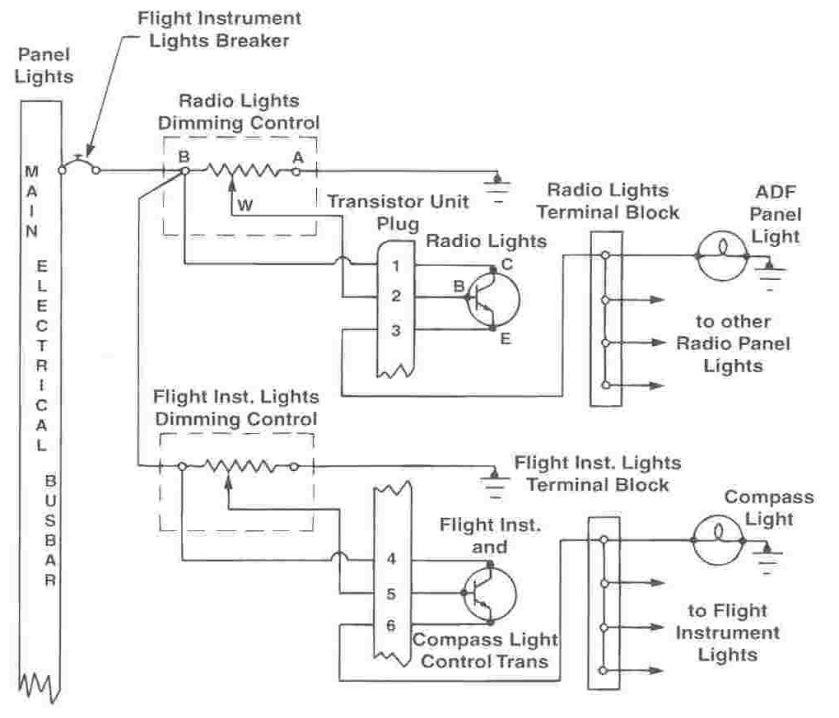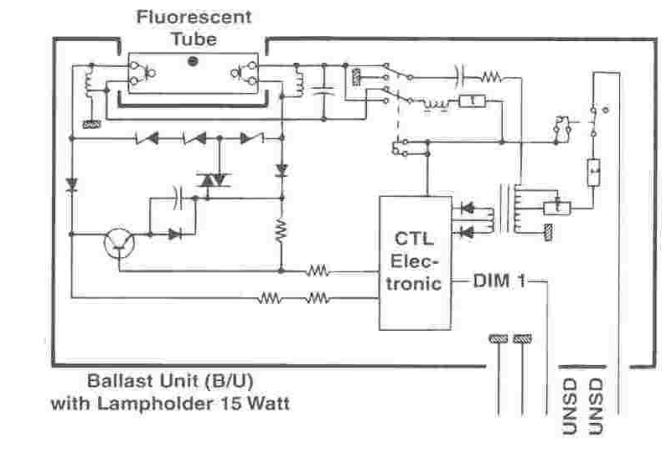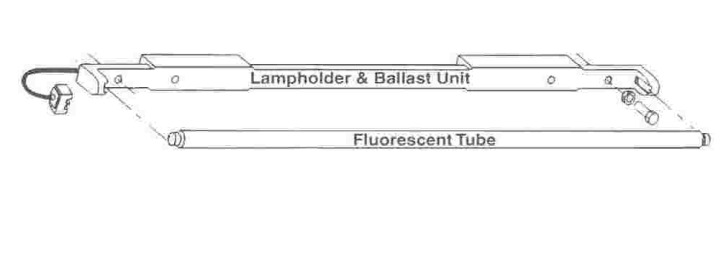
Lecture 2.8
2.3.3. Interior lights
There are a variety of interior lights found on modern aircraft, including instrument lights, overhead lights, step lights and reading lights to mention a few. In general, these lights can be divided into two basic categories: incandescent and fluorescent lights.
Incandescent Lights
Incandescent lights use a small coil of wire, called a filament, which glows in a white light when current flows through it. Lights can operate in a bright or dimmed position. Incandescent lamps are often dimmed using a solid-state circuit to control the current to the lamps. A potentiometer is used to control the input signal to the transistor, thus controlling the current to the light.
Electro Luminescent Light
Another type of interior lighting system has recently been introduced to aircraft instrument panels, signs and emergency exit or escape path markings. The Electro Luminescent (EL) panel contains a fluorescent paste sandwiched between two layers of plastic. The paste glows when an AC voltage is applied to the panel. The light glows through the unpainted areas of the plastic, typically displaying the needed letters and/or numbers. Electro-Luminescent panels operate only with alternating current, most light aircraft with EL Systems use a static inverter specifically designed for the Panel. (See Emergency Lights)

Figure 1: Dimmer Circuit
Fluorescent Lights
Fluorescent lights are made of a gas-filled glass tube which glows when a high AC voltage is applied to heated electrodes at each end. The electrodes emits electrons. This free electrons strike atoms of mercury vapour in the tube and this produces an ultraviolet light. The invisible ultraviolet light strikes the phosphorous coating on the inside of the tube and it glows in a white light. The conversion of one kind of light to another is known as fluorescence.
Fluorescent lamps are much more efficient than incandescent lamps, however they require the use of ballast-transformers and AC voltage. Therefore, fluorescent lamps are found only on large commercial aircraft.
Fluorescent lamps can operate in a bright or dimmed position. The fluorescent tube is in the dim position when a reduced voltage is applied to the ballast-transformer. In the bright position, the nominal voltage is applied to the fluorescent tube. Today's electronic-ballast's are weight-saving, starting the fluorescent-tube faster, their tube is no more flickering during start and operation.


Figure 2: Fluorescent Armature
2.3.3.1. Flight compartment lights
Lighting is needed for the illumination of instruments, switches and panels. Dome lights located on the ceiling provide non-directional distribution of light in the compartment; it typically contains an incandescent lamp and is powered from the battery or ground services bus. Flood lighting in the flight compartment from incandescent lamps and/or fluorescent tubes provides a general illumination of instruments, panels, pedestals etc. Fluorescent tubes located beneath the glareshield provide overall illumination of the instrument panels. Emergency lights are installed in the flight compartment for escape purposes. The colour of flight compartment lights is normally white; this reduces the power and heat, improves contrast on the instruments, and reduces eye fatigue.
